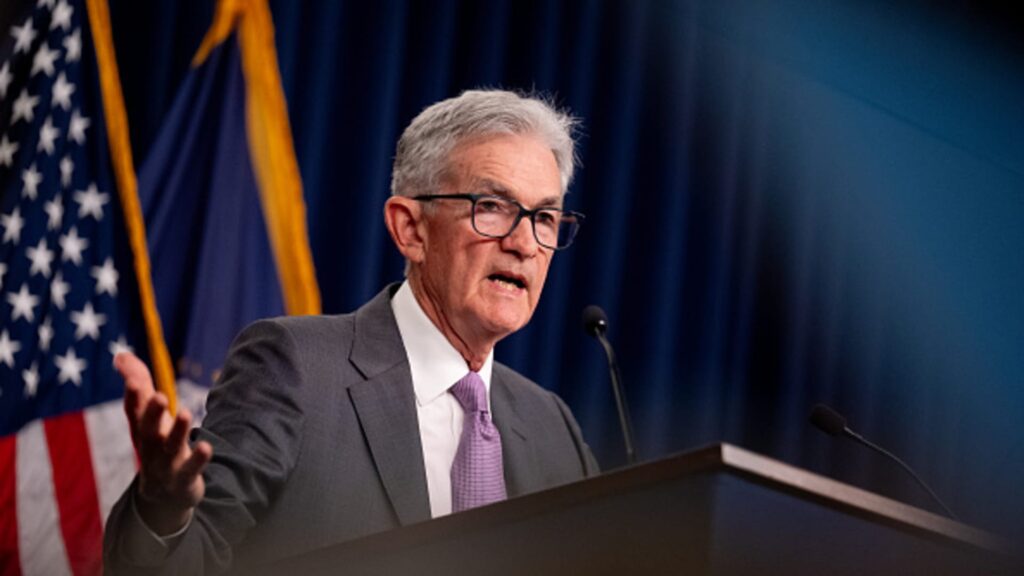On September 18, Federal Reserve Chairman Jerome Powell attended a press conference in Washington. Xinhua News Agency reporter Hu Yousong took the photograph. On the 18th, the Federal Reserve announced a cut of 50 basis points in the target range of the federal funds rate, reducing it to between 4.75% and 5.00%. This marks the first rate cut by the Fed since March 2020 and signifies a shift from a tightening to an easing monetary policy cycle.
The Federal Reserve concluded a two-day monetary policy meeting on the same day. Following the meeting, the Federal Open Market Committee (FOMC) issued a statement expressing greater confidence in the sustainable progress of inflation towards the 2% target and deemed the risks to achieving full employment and price stability to be broadly balanced. In the post-meeting press conference, Powell referred to the 50 basis point rate cut as a “strong action” and clarified that the FOMC did not consider the rate cut to be late but rather timely. Powell noted that the personal consumption expenditures price index has dropped from a high of around 7% to 2.2% in August, indicating a “significant easing” of inflation. The latest economic outlook released by the Federal Reserve on the same day showed that officials’ median forecast for the personal consumption expenditures price index at the end of this year has been reduced to 2.3%, down from 2. 6% in June.As inflation decreases, signs of weakness have emerged in the U.S. job market. Powell indicated that the average monthly job growth over the past three months was 116,000, significantly lower than earlier this year. Concurrently, the unemployment rate rose to 4.2%. According to the latest economic outlook, Fed officials’ median forecast for the unemployment rate at the end of this year is 4. 4%, higher than June’s 4.0%, suggesting that labor market conditions are not as favorable as previously anticipated. Additionally, the economic outlook indicates that 19 members of the FOMC expect the Federal Reserve to further cut rates before the end of this year, with 9 expecting a 50 basis point cut and 7 expecting a 25 basis point cut.
Due to inflation decreasing at a slower pace than anticipated, the Federal Reserve has maintained the target range for the federal funds rate at between 5. 25% and 5.5% since the end of July last year, the highest level in 23 years. In recent months, with further easing of inflation in the U.S. and signs of weakness in the job market, the Federal Reserve has faced pressure to shift its policy direction.
Federal Reserve Chairman Jerome Powell’s Press Conference: There is no fixed path for interest rates, and there are no signs of a recession in the US economy.
Resolution Statement: A 50 basis point rate cut! The Federal Reserve kicks off a monetary easing cycle with an aggressive first step.
Analysis and Interpretation: Late-night blockbuster! The Federal Reserve cuts rates by 50 basis points, boosting US stocks! How much impact does it have on global assets? A 50 basis point cut! The Federal Reserve lowers rates for the first time in over four years, with top global institutions and chiefs making six major judgments. “Fed Mouthpiece”: The first 50 basis point rate cut marks a bold start to the rate-cutting cycle. Late-night blockbuster! The Federal Reserve cuts rates by 50 basis points! How does the market react? A visual review of past rate-cutting cycles. “New Bond King” Gundlach: The possibility of the Federal Reserve cutting rates by 50 basis points in November after the US election is higher. Market Impact: Global Market: US stocks rise and fall, with the three major indices closing slightly lower. International precious metal futures generally closed lower, with COMEX gold futures down 0.29%. Spot gold hit a new high before falling, closing down 0.41% at $2,558.91 per ounce in New York. Non-US currencies generally rose, with the British pound surging 80 points against the US dollar and the euro surging 50 points against the US dollar. The US dollar index fell after the Federal Reserve’s rate cut.